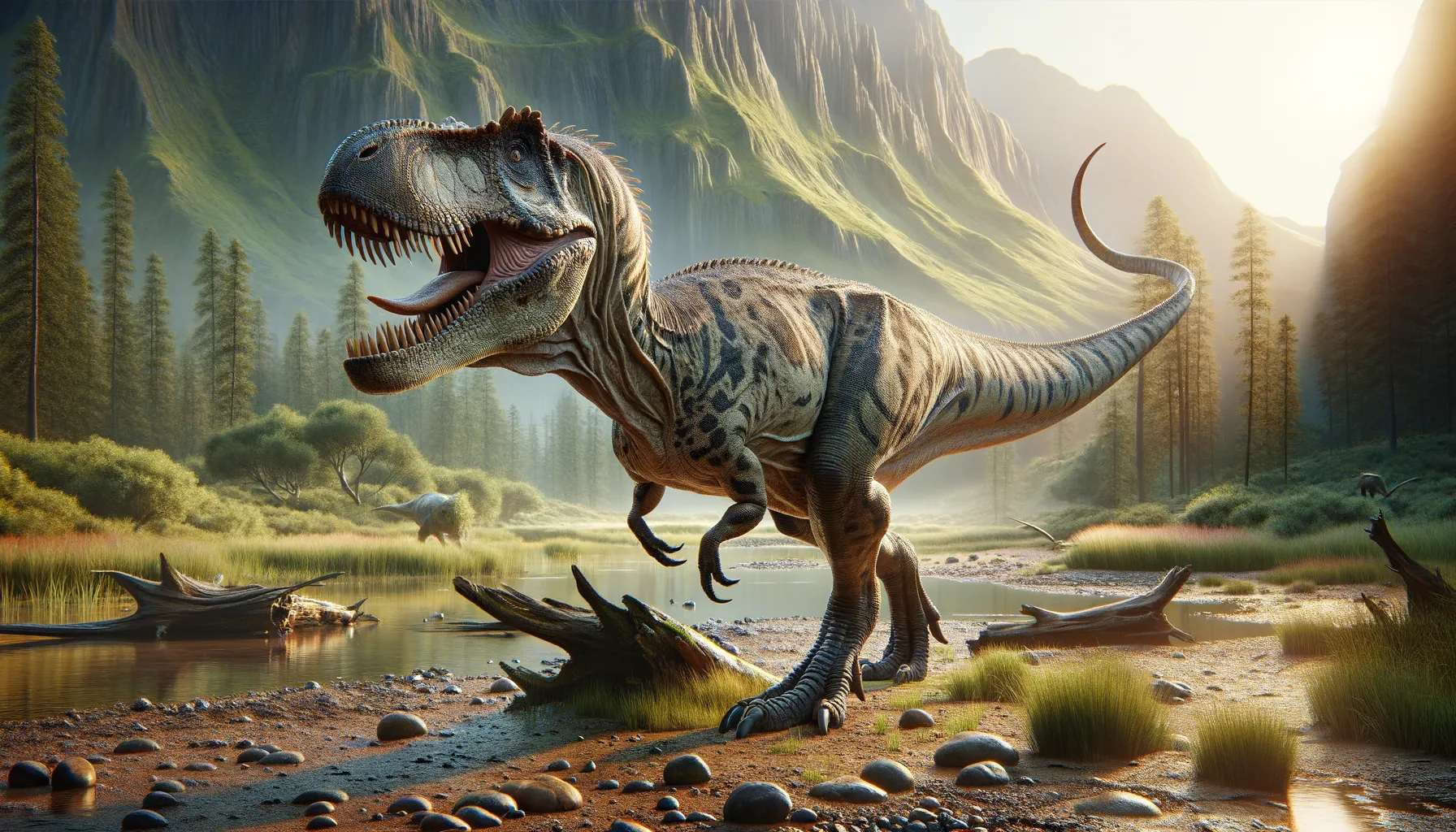
Choconsaurus
A cunning hunter of ancient lands.
Period
Cretaceous
Length
Roughly 30 feet long.
Height
About 12 feet at the hip.
Weight
Approximately 4 tons.
Choconsaurus was a mid-sized carnivorous dinosaur from the Cretaceous period, discovered in modern-day Argentina. Equipped with sharp teeth and strong hind legs, it thrived as a proficient hunter in its ecosystem. Despite its fearsome look, recent studies suggest it may have also scavenged, depending on the available food sources. Its fossils have helped paleontologists understand more about predator behavior and adaptability during its time.
Diet
Primarily carnivorous, it preyed on smaller dinosaurs and other reptiles. Choconsaurus sometimes scavenged from carcasses left by larger predators.
Hunting
The Choconsaurus likely hunted alone, using its sharp senses to stalk prey. Its strong legs allowed it to make quick, powerful bursts of speed to catch prey off guard.
Environmental challenges
Choconsaurus faced competition from other carnivorous dinosaurs, requiring it to be an unpredictable and versatile predator. Changes in environment, such as shifts in climate or vegetation, could impact available prey and force it to adapt its hunting strategies. Survival depended heavily on both hunting and scavenging, especially during harsh periods.
Speed
Moderate, suitable for short distance pursuits.
Lifespan
Estimated to live up to 30 years.
First discovery
Unearthed in Chocón, Argentina, in the 1990s.
Fun Facts
- Choconsaurus is named after Choique, a local word for a type of ostrich in Argentina, where its fossils were found.
- This dinosaur lived approximately 90 million years ago during the Late Cretaceous period.
- Choconsaurus is believed to have been a herbivore, meaning it primarily ate plants.
- The fossils of Choconsaurus were discovered in Patagonia, a region known for its rich dinosaur history.
- Despite its large size, Choconsaurus likely moved in herds for protection and social interaction.
- Choconsaurus had a long neck, which helped it reach vegetation high above the ground.
- Its discovery helped scientists better understand the diversity of sauropod dinosaurs in South America.
Growth and Development
Choconsaurus hatchlings were vulnerable and required safe hiding places. With rapid growth, young dinos quickly learned to hunt and fend for themselves. Developmentally, they sought small prey before attempting larger animals, learning essential hunting skills from trial and error.
Habitat
Choconsaurus lived in diverse habitats, ranging from dense forests to open plains. Its adaptability allowed it to thrive in both humid and dry conditions. Access to water sources was crucial for its sustenance.
Interaction with other species
Choconsaurus had to share its environment with other predatory and herbivorous dinosaurs, often competing for territory and food. It maintained a balance by shifting strategies based on interactions with larger predators. Its presence influenced the behavior and population dynamics of other species in its habitat.
Natural lifespan
Choconsaurus typically lived around 20 to 30 years.
Reproduction
Choconsaurus likely laid eggs in secure nests, with the young receiving minimal parental care. After hatching, juveniles quickly learned to fend for themselves, developing necessary survival skills.
Social behaviour
This dinosaur was likely solitary in nature, focusing on individual sufficiency. Any social interaction might have been limited to mating seasons. Territorial disputes with others of its kind could have occurred over food resources.
Fossil locations
Most known fossils have been found in the Patagonia region of Argentina. The discovery in Chocón provides crucial insights into its lifestyle and adaptation. Fossil sites are primarily in rocky sediments, where prehistoric conditions favored preservation.
